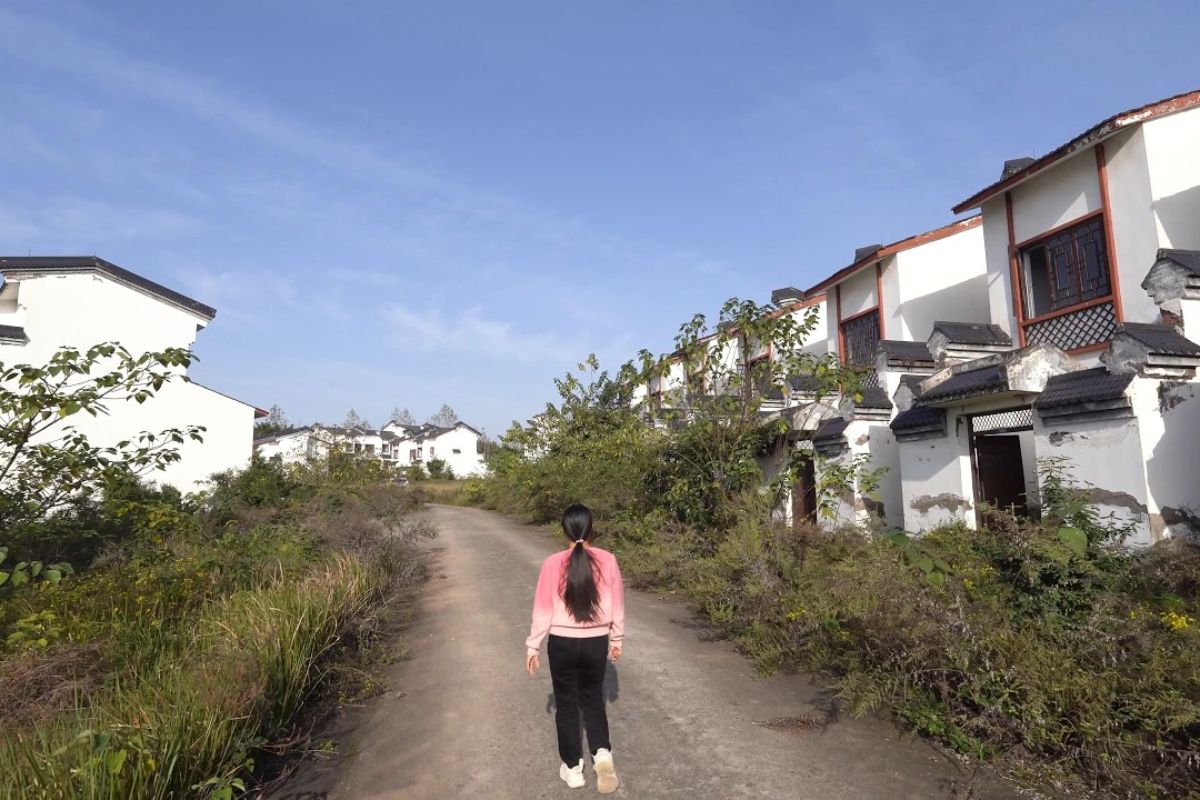The empty villas of Chongqing: the entire condominium that was built, furnished and left uninhabited.
Dozens of Chinese villages have been converted on a mountain in Chongqing's Jiangjin District empty villaswith completed houses, infrastructure installed and a scene of abandonment that contrasts sharply with the privileged view of the city.
Built with courtyards, balconies, fences, water and power lines, these structures high in the mountains almost form a small city, but remain silent, overwhelmed by weeds and trees growing between peeling walls and vine-covered roofs. The result is a collection of empty villas where time seems to have stood still, as if the residents have given up on arriving.
An entire village was built, but without residents.
The starting point of this story is a mountainous area in Jiangjin District of Chongqing, where they were built… Dozens of villages in a roworganized as a medium to large condominium.
Visitors to the site will encounter internal streets, rows of houses and various types of units ranging from small single-storey villages to large, self-contained three-storey residences.
Based on the visual assessment on site, it does not appear that the construction site was interrupted during the shell construction phase.
The houses are built, plastered, painted, with built-in doors and windows, equipped bathrooms and exposed, functional plumbing.
In many cases, a simple walk through the open gate leads to spacious rooms, defined corridors and interior areas already divided into bedrooms, kitchens and service areas.
For an outside observer, the first question is unavoidable: How could a complex of this size with so many… empty villas Although finished, it reached this level of neglect without ever having been effectively occupied.
Prefabricated houses, complete infrastructure and a feeling of waste.
A tour of the buildings makes it clear that the project has progressed well beyond the basic phase. There are metal gates, wooden doors, glass interior doors, bathrooms with plumbing, and existing water and sewer lines.
In some units, lighting fixtures have been mounted on the ceiling and electrical outlets are distributed throughout the rooms.
In several houses the visitor clearly gets the impression that this would be possible “Move in with your suitcases”All that is required is cleaning, system checks and minor repairs.
Metal handrails have been added to interior stairs and balconies, patios and exterior areas are surrounded by railings, and in some sections the flooring appears to be permanently installed.
This contrast between advanced construction and the complete absence of residents reinforces the sense of waste.
Each new door that opens reveals another empty mansion, with obvious investment in materials and finishes but without any trace of everyday use.
Vegetation, moisture and visible signs of neglect.
Although the project is well advanced, time has left its mark. The interior streets and access paths between the houses are overgrown with vegetation.
In several passages The weeds are so high that they block the path.forcing visitors to search for the few remaining free tickets.
Some units are already partially covered by plants and trees that have grown on the walls.
In one of the ground floor blocks, vines and climbing plants run through the living area, covering walls and windows.
In front of certain houses, the trees have grown so tall that they overhang the roof, suggesting that the neglect is not a new phenomenon.
Walls can be seen within the villages Excessive peeling, damp spots and a musty smell.classic signs that properties have been closed for an extended period of time without adequate ventilation.
The once new metal railings now appear rusty but still sturdy, reinforcing the impression that the physical structure retains its stability despite a lack of maintenance.
Even the surroundings reflect this scenario of prolonged pause: rooftops covered in vines, backyards overgrown with weeds, and small wild fruits sprouting in areas that in an occupation scenario could be gardens or places of social gathering.
Traditional architecture and privileged views of the city.
One of the most striking aspects of the complex is the architectural style chosen.
The houses follow the aesthetics of white walls and dark tilescombined with the traditional style of certain Chinese regions, which gives the condominium a visual unity and reinforces the feeling of a planned project rather than an improvised occupation.
As empty villas They had a dominant position on the mountain.
From certain vantage points it is possible to see the city below as the cityscape stretches into the background.
What would have been a strong selling point if settled now serves as the backdrop for a large, uninhabited area.
Spacious balconies extend from the upper floors with enough space for garden furniture and relaxation areas.
From a real estate product perspective, these are units with… Potential for panoramic views and a standard of comfort comparable to higher income segments.which deepens the mystery of abandonment even further.
Empty villas and a mystery with no official answer.
So far we know from field observations:
• The villas were built and reached the interior finishing phase.
• Water, electricity, doors, windows and bathrooms were installed.
• The place has been abandoned long enough for trees and vines to take over the facades and roofs.
• There are no signs of prolonged occupation, only completed structures that were never fully used.
What is missing from the picture is clear official information about the reason for the abandonment, such as government decisions, changes to urban planning regulations or specific financing problems.
Without easily accessible public documents, any explanation remains in the realm of hypothesis.
In general, projects of this type can be affected by factors such as changes in land use regulations, changes in real estate demand, problems with economic viability or disagreements between different investors.
In the specific case of this one empty villas in Chongqing, however There is no confirmed justification for the scene observed, only the result: a complete and silent condominium at the top of the mountain.
What this case reveals about urban occupation and planning.
Whatever the cause, the collection of abandoned villages helps illustrate a broader phenomenon: the gap that sometimes exists between planning on paper and the actual occupation of the territory.
A project of this size requires investments in materials, labor, infrastructure and logistics.
When the final product turns into a group of empty villasThe effects are not only visual, but also economic and social.
The area that could accommodate families, services or tourism activities remains fallow, while the city below continues to struggle with the challenges of densification, mobility and housing.
At the same time, these structures can be the target of planned repopulation, revitalization or change of use in the future, provided there is a political decision and economic interest.
Until then, they remain a kind of floating scenario: Streets with houses already built, fences installed, bathrooms built in, and windows overlooking the countryside, but no residents to open the curtains.
Ultimately, this collection doesn't just attract attention through the images empty villasbut from what he suggests about investment decisions, the risks of large projects and the importance of balancing construction, real demand and urban planning.
Given such a scenario, what would make more sense for you: renovating these empty villas with a new planned use or demolishing everything and starting over with a different project format?

